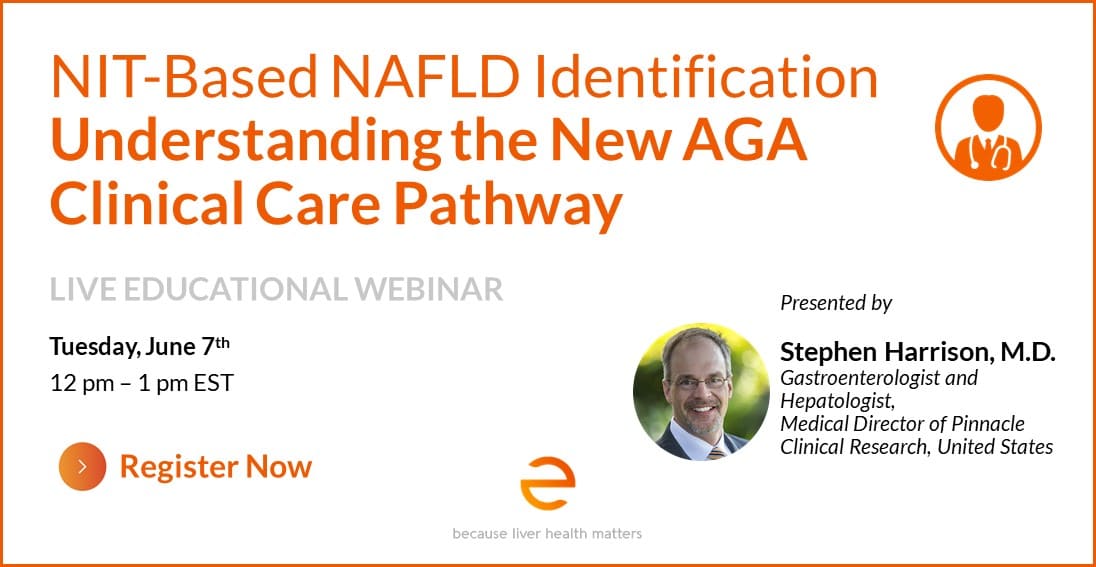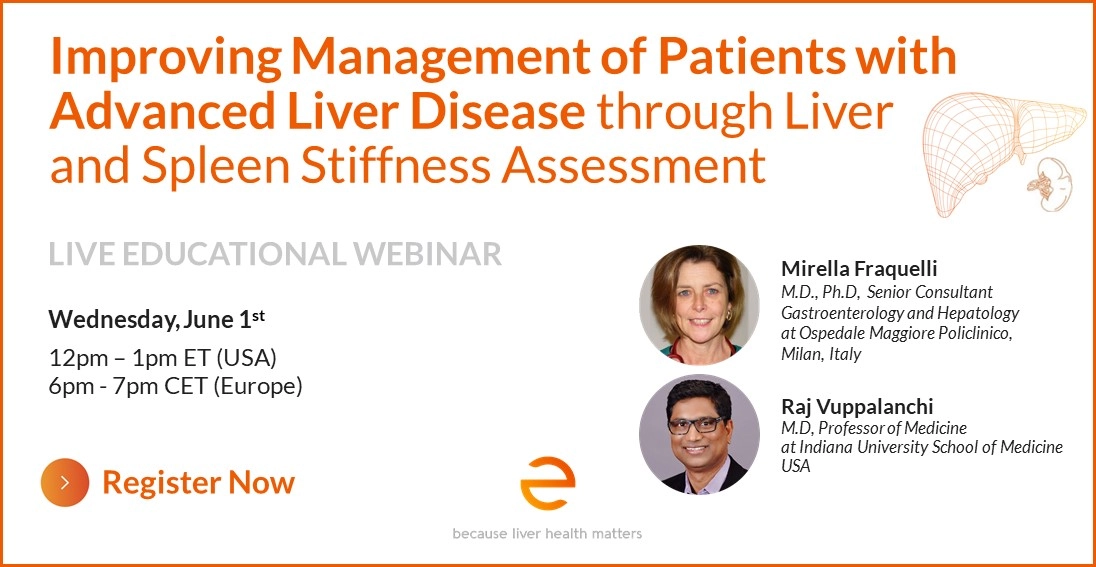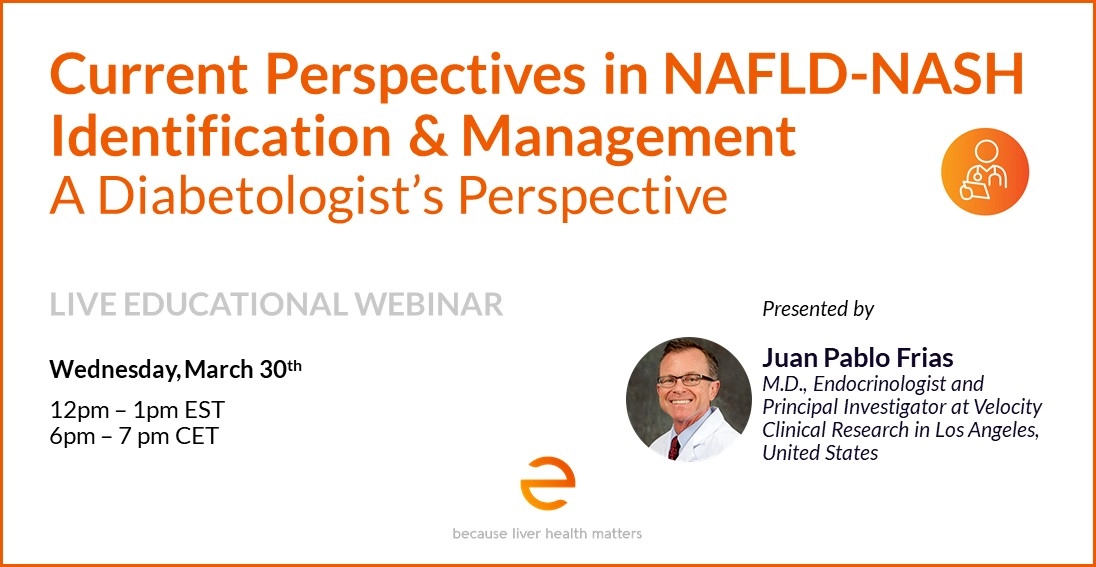Echosens is pleased to present a webinar featuring Stephen Harrison, M.D., gastroenterologist and hepatologist, medical director of Pinnacle Clinical Research, and visiting professor of Hepatology, University of Oxford, as he reviews the new American Gastroenterological Association (AGA) Clinical Care Pathway for non-invasive technology (NIT)-based risk stratification of patients with non-alcoholic fatty liver disease (NAFLD) risk factors.
The webinar NIT-Based NAFLD Identification – Understanding the New AGA Clinical Care Pathway includes guidance on 1) how to determine which risk-factor patients will benefit from testing, 2) the NIT-based FIB-4 + measurement of liver stiffness (LSM) by vibration controlled transient elastography (VCTE™) test sequence and 3) risk-stratified disease management guidance.
NAFLD and Risk Stratification
NAFLD currently effects approximately 37% of adults, is asymptomatic and is infrequently diagnosed in primary care or diabetology clinics.
Given the clinical and cost-containment benefits of early disease identification and management, AGA assembled a multidisciplinary panel of experts to develop and publish explicit disease identification, risk stratification and disease management guidance via a recent Gastroenterology journal publication entitled Clinical Care Pathway for the Risk Stratification and Management of Patients With Nonalcoholic Fatty Liver Disease.
AGA Clinical Pathway
The AGA Clinical Pathway provides point of care NIT sequencing guidance and describes risk stratification-based disease management strategies. The featured clinical pathway test sequence utilizes FIB-4 as the initial NIT followed by LSM by VCTE™ as the second level NIT for application in patients with FIB-4 values >1.3.
This NIT test sequence effectively risk stratifies risk-factor patients into three categories:
➜ Risk factor patients with LSM by VCTE™ < 8 kPa or FIB-3 <1.3 are categorized as low risk for progressive NAFLD and can be managed with lifestyle modification at the point of care.
➜ Risk factor patients with FIB-4 values of 1.3-2.67 and/or LSM by VCTE™ values 8-12 kPa are classified as indeterminant risk and will potentially benefit from lifestyle modification and future NASH drug therapies.
➜ Risk factor patients with LSM by VCTE™ >12 kPa or FIB-4 value >2.67 are classified as high risk and will benefit from immediate referral to a liver specialist for disease management to include lifestyle modification and treatment with future NASH drug therapies.
Clinicians can access simplified guidance by scanning the QR code on the first page of the AGA Clinical Pathway publication and downloading the new AGA NASH app, which features an integrated FIB-4 calculator, NIT test sequencing instructions and disease management instructions based on fibrosis stratification.




